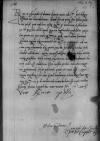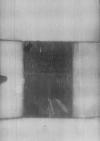 BCz, 1595, p. 421
BCz, 1595, p. 421
Reverendissime in Christo Pater et Domine, domine maior colendissime. Post diligentissimam mei commendationem.
Haud scio, an quisquam sine scelere praeterire potest, quin reditum Vestrae Reverendissimae Paternitatis incolumem et illustrem ex tot praeclare obitis apud ⌊caesarem⌋ legationibus gratuletur, praesertim cum res per Vestram Reverendissimam Paternitatem gestae non tantum summam gloriam ingenio atque ornamentis Vestrae Reverendissimae Paternitati pepererint, sed maxima quoque adiumenta atque aperta auxilia ⌊huius regni⌋ rebus stabiliendis attulerint. Quare non possum, quin gau paper damaged⌈[au]au paper damaged⌉deam paper damaged⌈[am]am paper damaged⌉ talem virum eumque praesulem tanta rerum experientia tantaque p paper damaged⌈[taque p]taque p paper damaged⌉rudentia clarum nobis esse redditum. Cuius consilio, peritia, industria ⌊regni nostri⌋ gubernacula fulciri poterunt, quem ut Deus Optimus Maximus regno ⌊regibus⌋que nostris diu servet incolumem, etiam atque etiam rogo meque Reverendissimae Vestrae Paternitati de meliori nota commendatum esse cupio.
Datum ⌊Posnaniae⌋, decima Augusti die anno Domini M-o D-o XXXII-o.
Vestrae Reverendissimae Paternitatis ad mandata ⌊Lucas de Gorka⌋ castellanus Posnaniesis et capitaneus subscripsit


 BCz, 1595, p. 424
BCz, 1595, p. 424